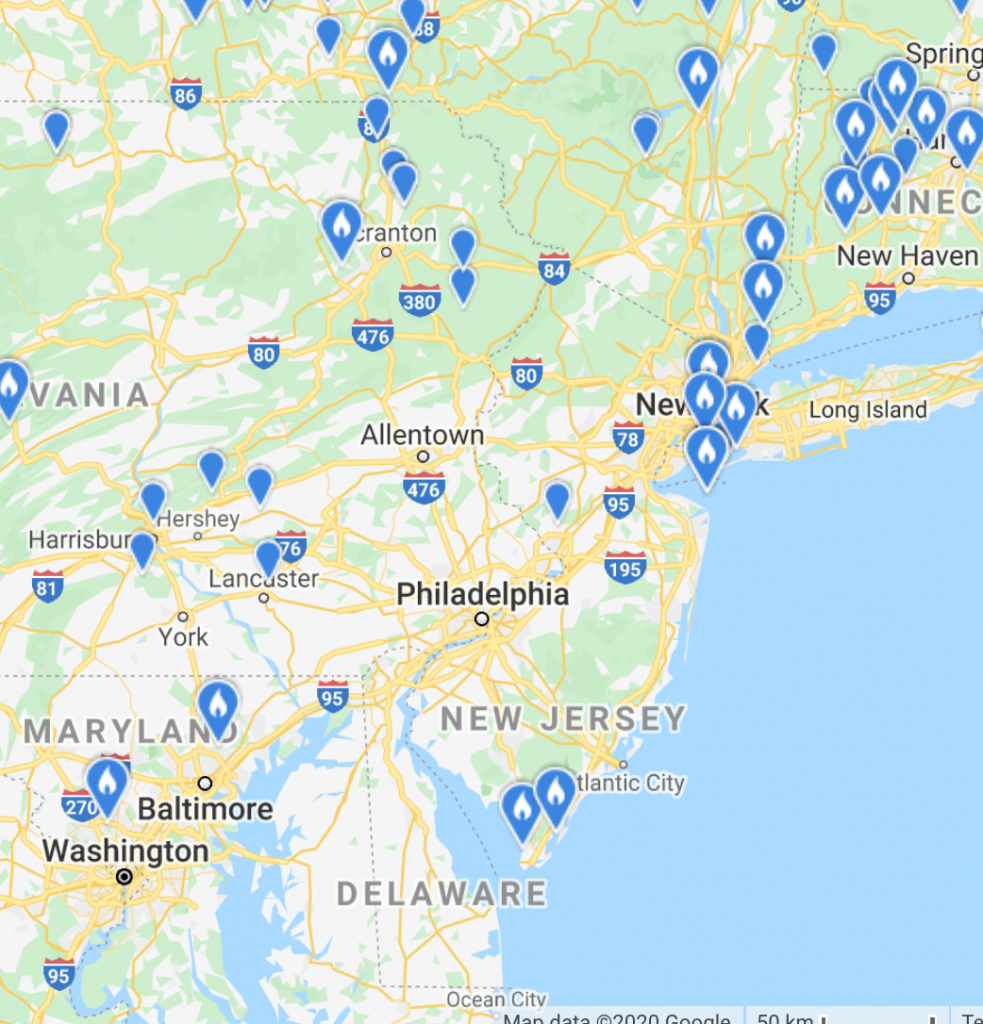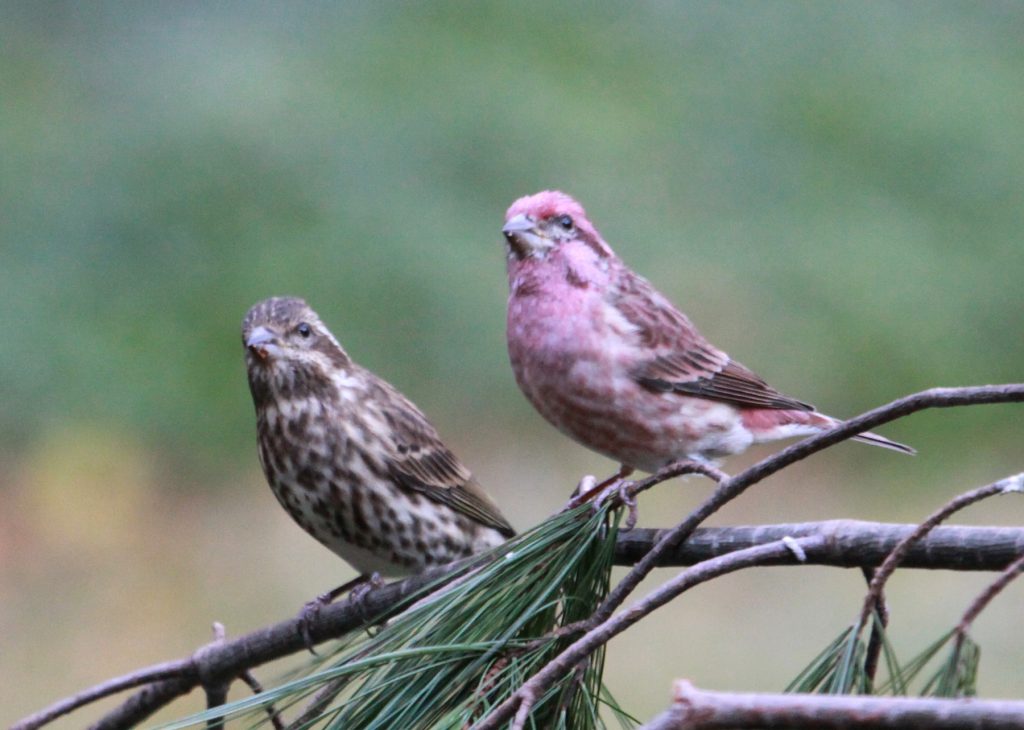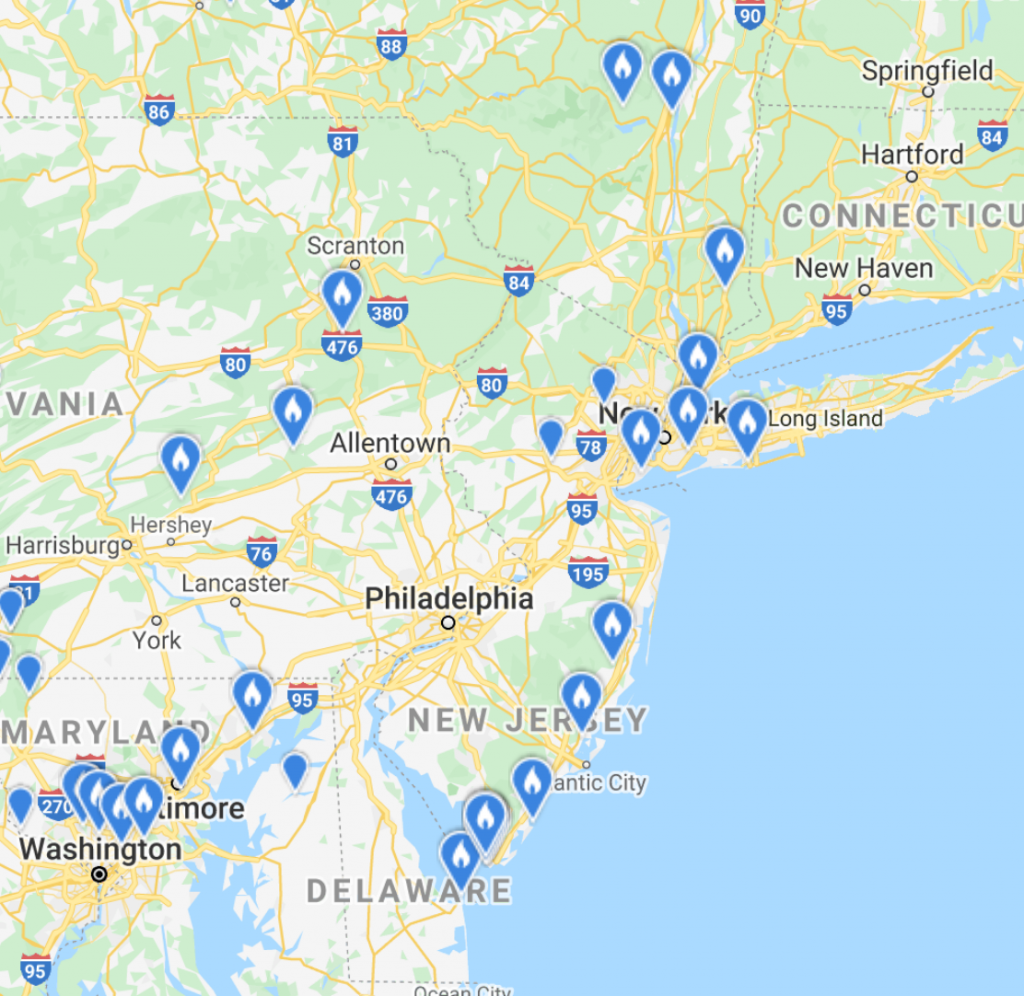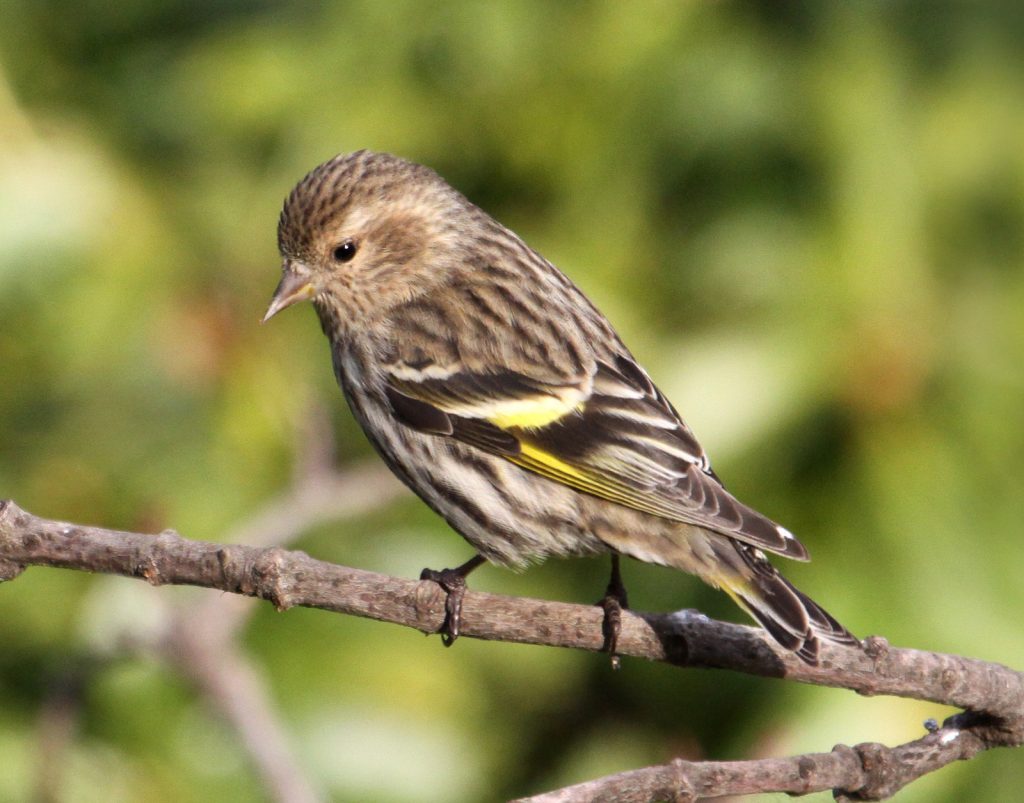Last week while sitting in my living room, reading a book with the windows open, I heard a familiar sound in the background…a tinny yank-yank-yank. It’s funny how a birder’s brain works, since I wasn’t listening for birds, yet immediately and sub-consciously the words “Red-breasted Nuthatch” came out of my mouth. Later that day while playing golf, I heard two more Red-breasteds calling, but didn’t have binoculars with me to confirm that my memory of their call was correct. These combined ‘sightings’ were significant, because last winter I saw only a single Red-breasted Nuthatch through the whole year, and here it was August and already I had my first-of-the-year. And from my living room! Two days later, on a walk where I was hoping for migrants to show up after a night of favorable winds, we spotted at least two Red-breasted Nuthatches (which were flagged by eBird as being rare for this location and time of year), proof that my ear was not fooling me.
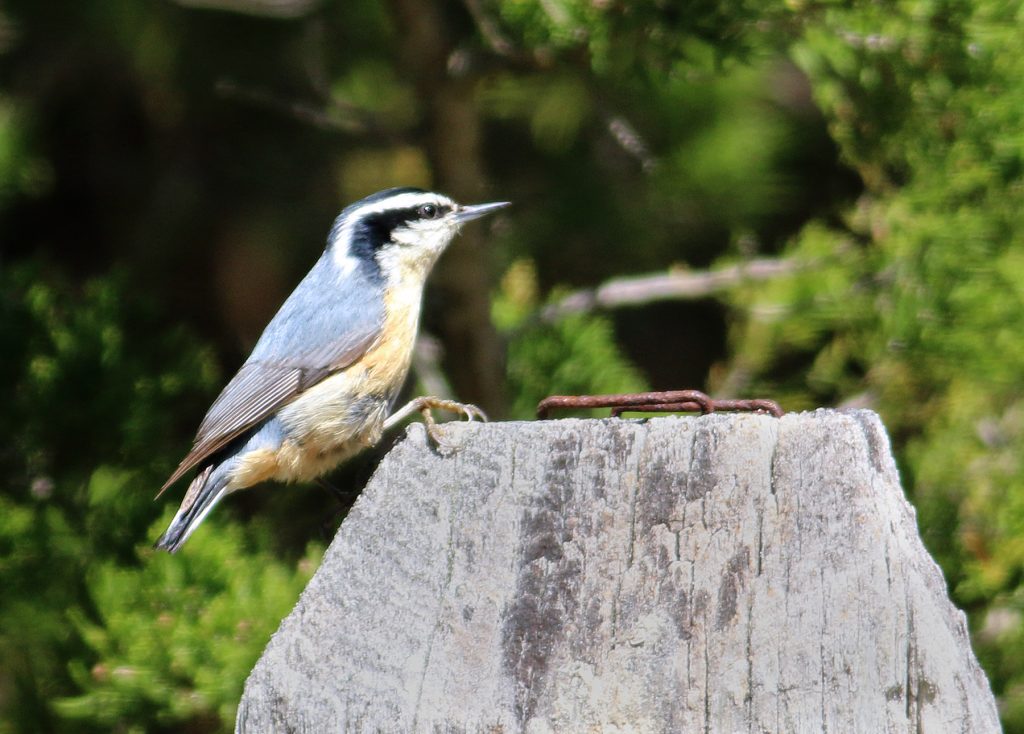 Red-breasted Nuthatch is one of those species that mostly breeds far north of us, in southern Canada spruce/fir forest, but also in the highlands of northernmost NJ and in the Appalachian Mountains. It’s one of four nuthatch species that can be found in the US, each having its own habitat preference (quick quiz…can you name the three other US nuthatch species? Answer at the end of this post). Of those nuthatches, Red-breasted is unique in that it is highly migratory, and its seasonal migration fluctuates from year-to-year depending on the abundance of spruce and fir seed cones further north; some years we see very few here in NJ, while in other years they are common. OK, I made a broad statement; now can I back it up with data? For that, let’s go to eBird sightings from August of this year and compare it with the past four years.
Red-breasted Nuthatch is one of those species that mostly breeds far north of us, in southern Canada spruce/fir forest, but also in the highlands of northernmost NJ and in the Appalachian Mountains. It’s one of four nuthatch species that can be found in the US, each having its own habitat preference (quick quiz…can you name the three other US nuthatch species? Answer at the end of this post). Of those nuthatches, Red-breasted is unique in that it is highly migratory, and its seasonal migration fluctuates from year-to-year depending on the abundance of spruce and fir seed cones further north; some years we see very few here in NJ, while in other years they are common. OK, I made a broad statement; now can I back it up with data? For that, let’s go to eBird sightings from August of this year and compare it with the past four years.
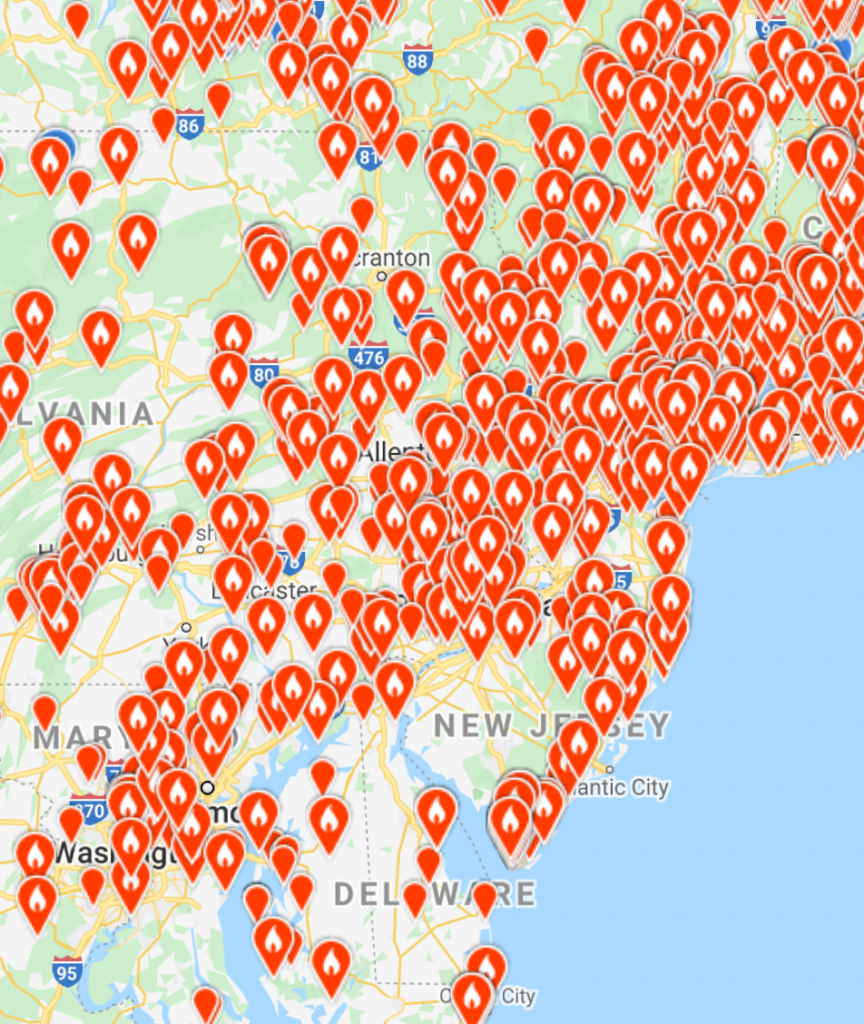
Sightings of Red-breasted Nuthatches from August 2020, already extending throughout New Jersey down to the Washington DC area.

Compare those 2020 results with the sightings of Red-breasted Nuthatches from August of 2019, when it was seen in only six locations within all of NJ.
It’s not too hard to see a pattern in this timeframe, where we have alternating years of sparse sightings, followed by a year where they are common, although going further back in time irruptions don’t necessarily occur two years apart. So if you’re not familiar with the song of Red-breasted Nuthatch (and distinguishing that call from the similar-sounding and more common White-breasted Nuthatch), do yourself a favor and aquaint yourself with its sounds, and get ready for a good year of sighting them.
But there’s even better news for winter finch fans. The increase in Red-breasted Nuthatches here in August has further implications for other irruptive species such as Purple Finch and Pine Siskin. If we look at the sightings of these two species over the past four years, they largely parallel that of Red-breasted Nuthatches, with years of good sightings in 2018 and 2016, and poor years in 2019 and 2017. Because they migrate later in the year, we’ll look at the eBird results for Purple Finch in September of 2019-2016 as examples, and compare that with what we saw for Red-breasted Nuthatches.

Here’s the map showing Purple Finch sightings from Sept. 2019. Paralleling Red-breasted Nuthatch, 2019 was not a great year for this species near us.

Once again mirroring Red-breasted Nuthatches, Purple Finches were relatively common in Sept. 2018, even down to Washington DC.

In Sept. 2016, Purple Finches were again relatively common. So for four years we see similar patterns for Red-breasted Nuthatches and Purple Finches.
Another irruptive spruce/fir species is Pine Siskin. To save you from map overload, we’ll just show their occurrence in October of 2019 and 2018.

Compare the 2019 results with the abundance of sightings of Pine Siskins in 2018, when they were seemingly all over.
The bottom line is to keep your eyes and ears open not just for Red-breasted Nuthatches this year, but for all three of these species, expecting the Purple Finches and Siskins to arrive later this season. We can always hope to see more of the other tougher-to-see irruptive species, such as White-winged and Red Crossbills or Evening Grosbeaks this winter, but those species prefer pine seeds, so there is no reason to expect them to coincide with Red-breasted Nuthatches, Pine Siskins, and Purple Finches, which prefer smaller cone seeds from spruce, fir, and hemlock.
I almost forgot…the answer to the trivia question posed up above: the four species of US nuthatches are White-breasted (hardwood forests), Red-breasted (spruce/fir), Brown-headed (pine), and Pygmy (pine).
FEB 2021 NOTE: Indeed, the predictions were correct. We had an invasion of multiple winter finches, with tons of Pine Siskins and Red-breasted Nuthatches, lots of Evening Grosbeaks, a healthy showing of Red Crossbills, and a smattering of Common Redpolls here in NJ. It was quite a finchy winter.


